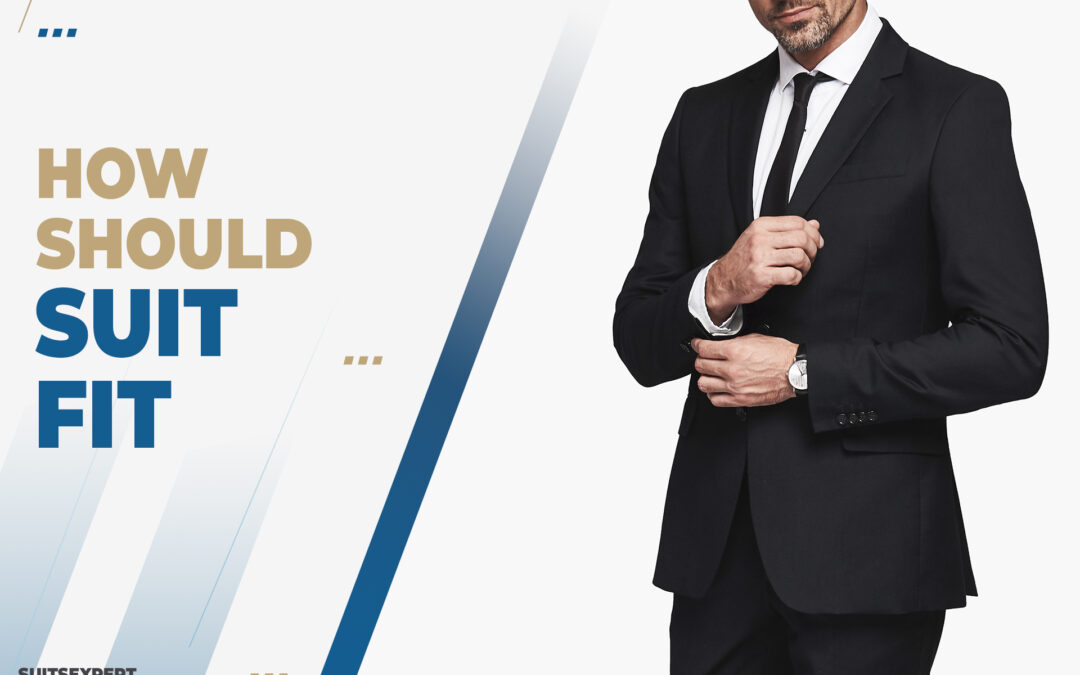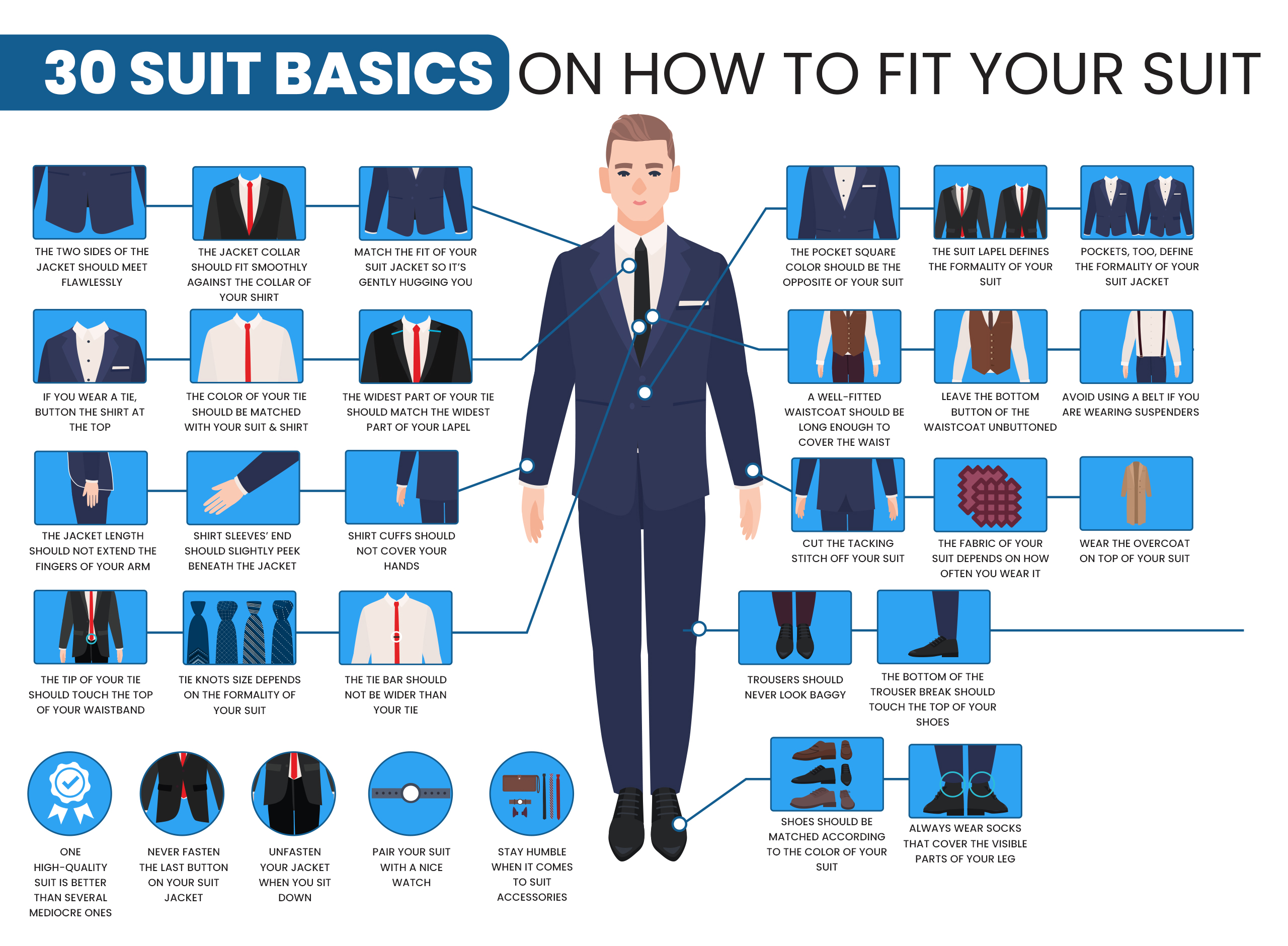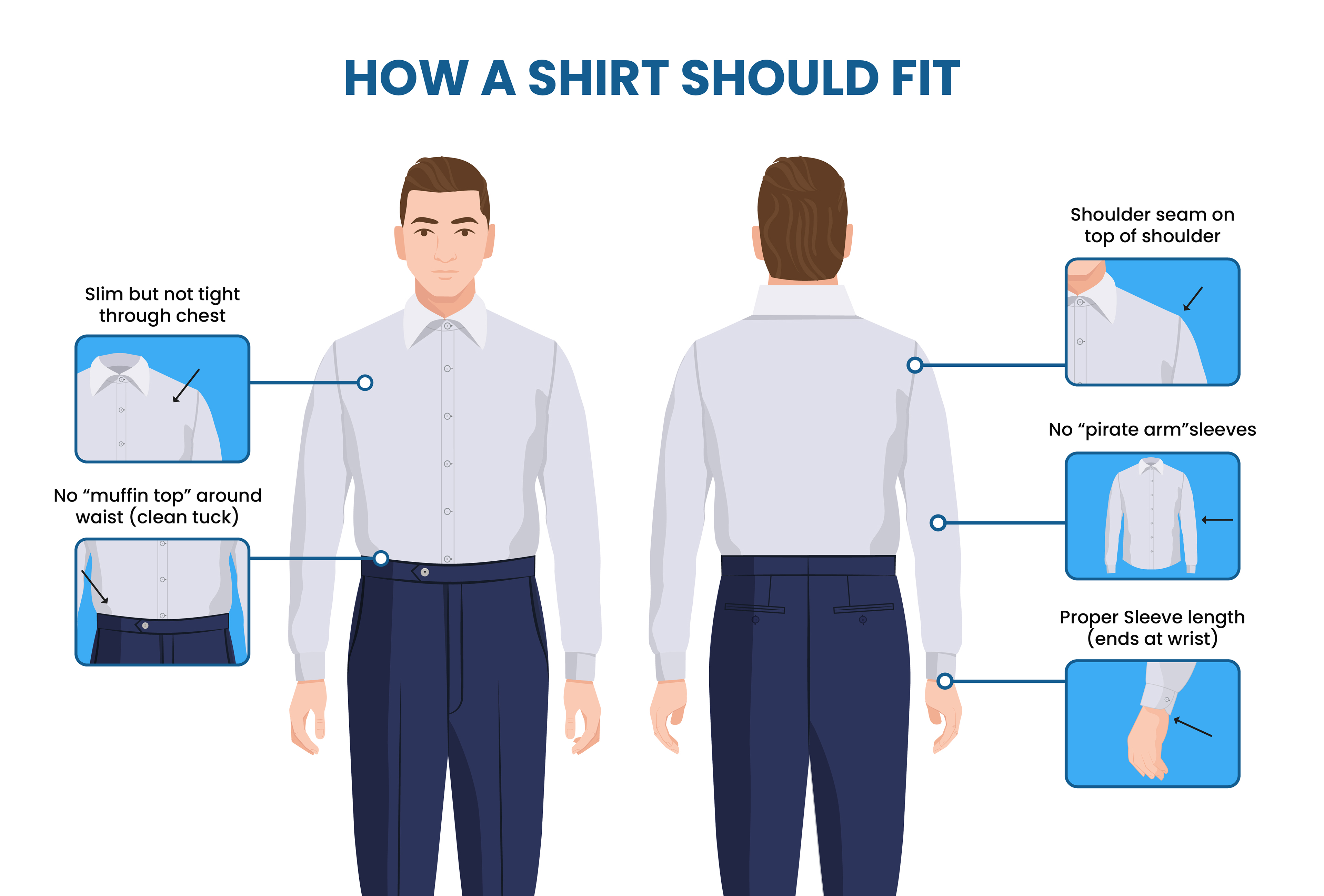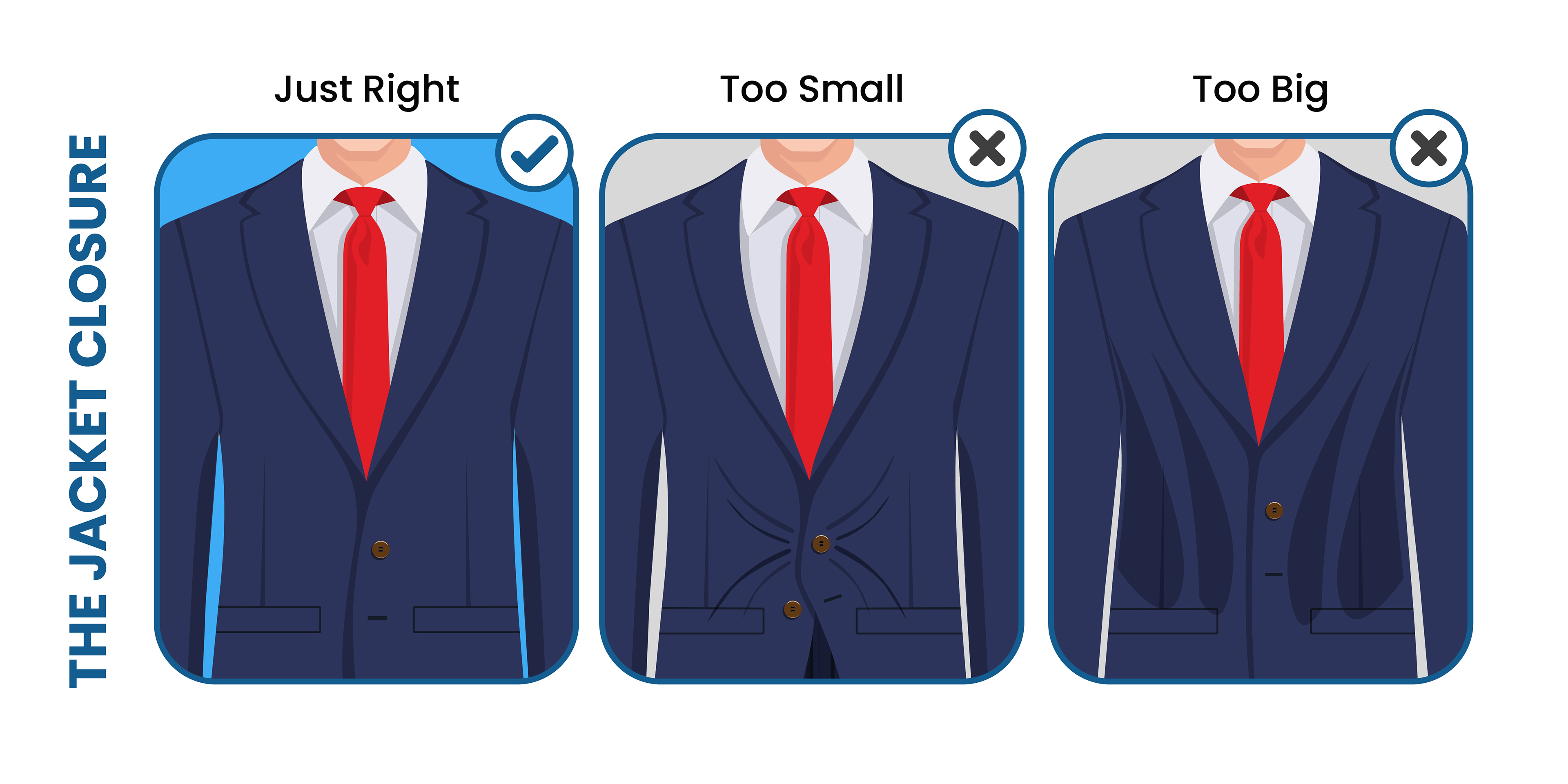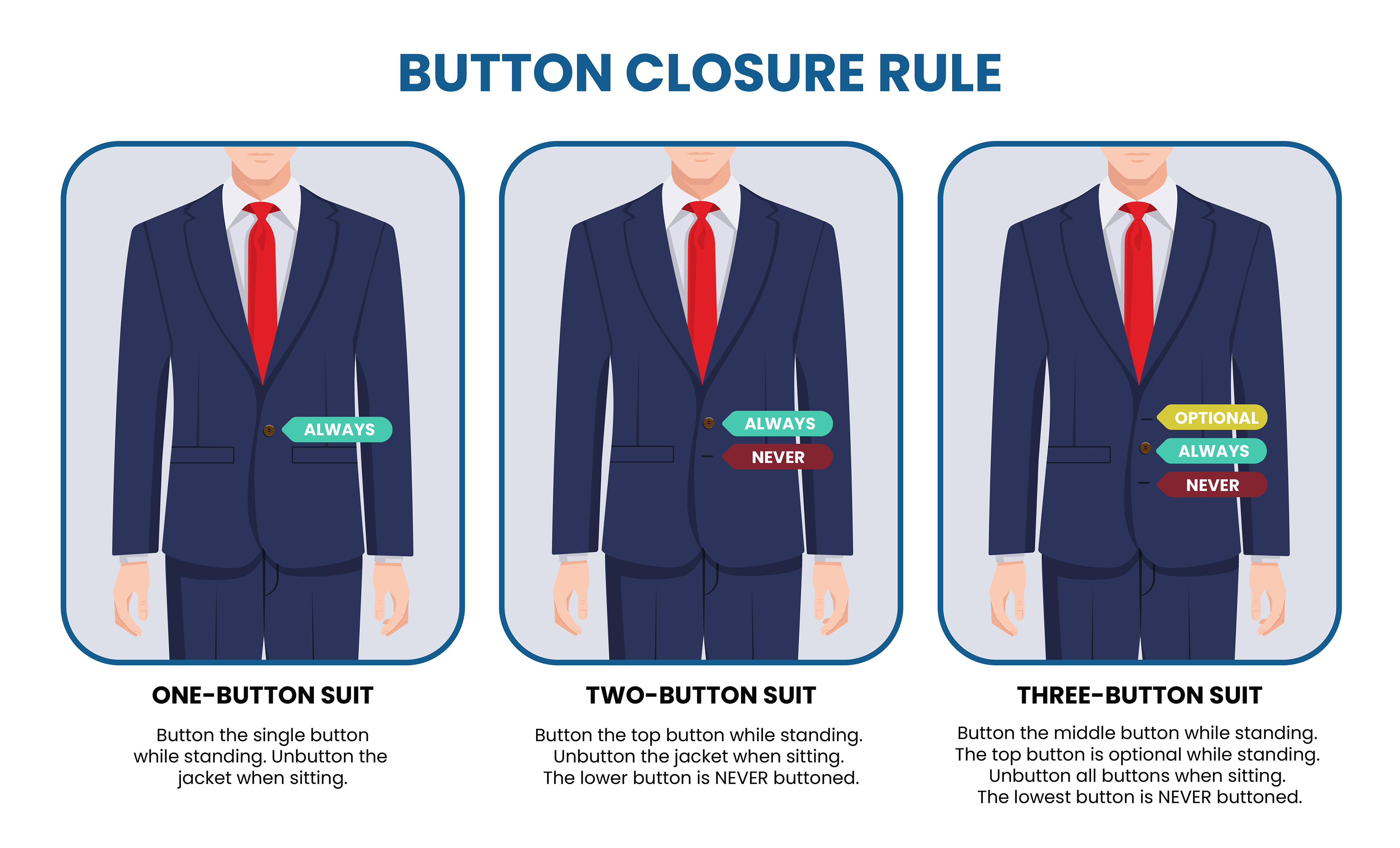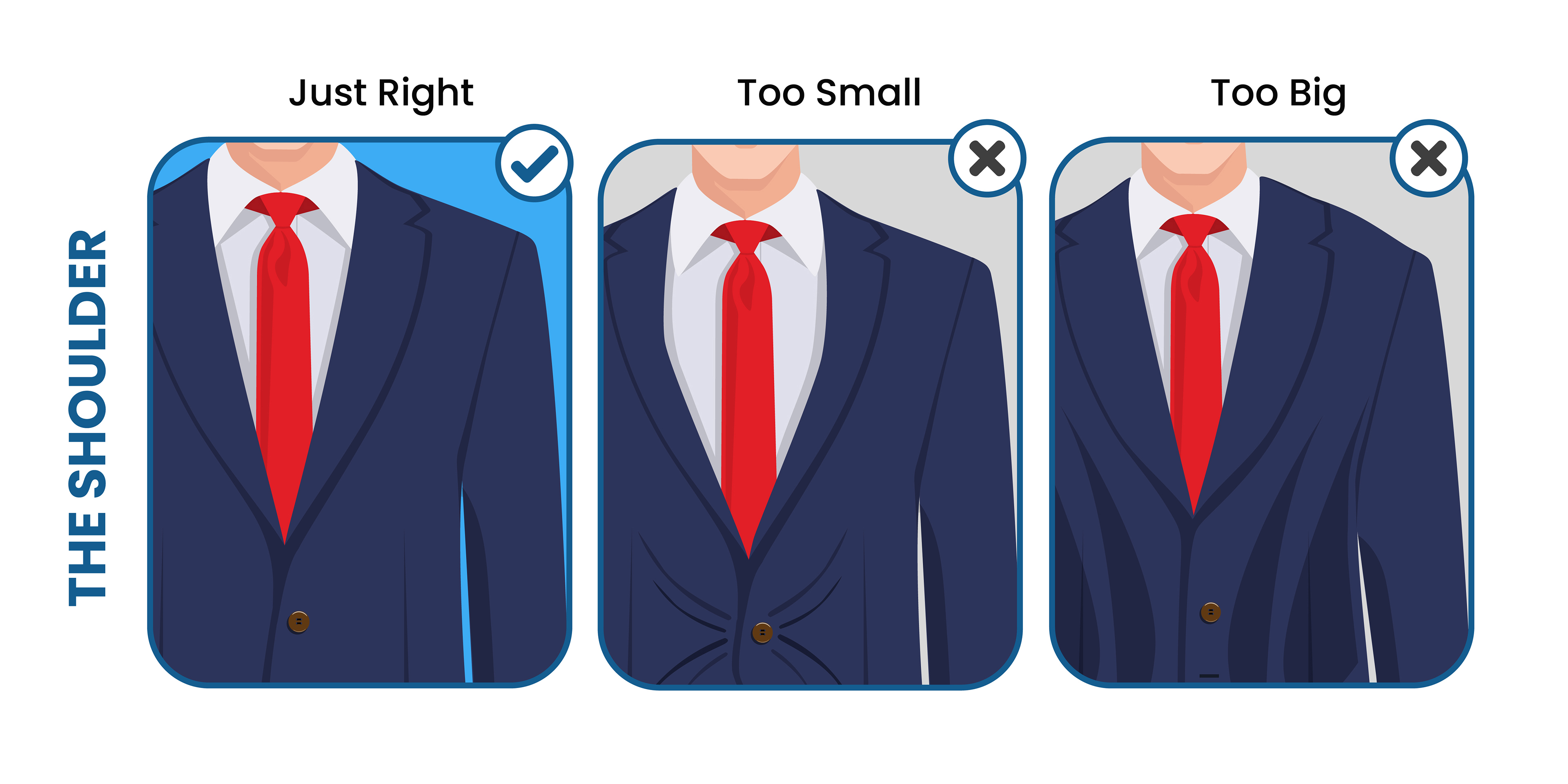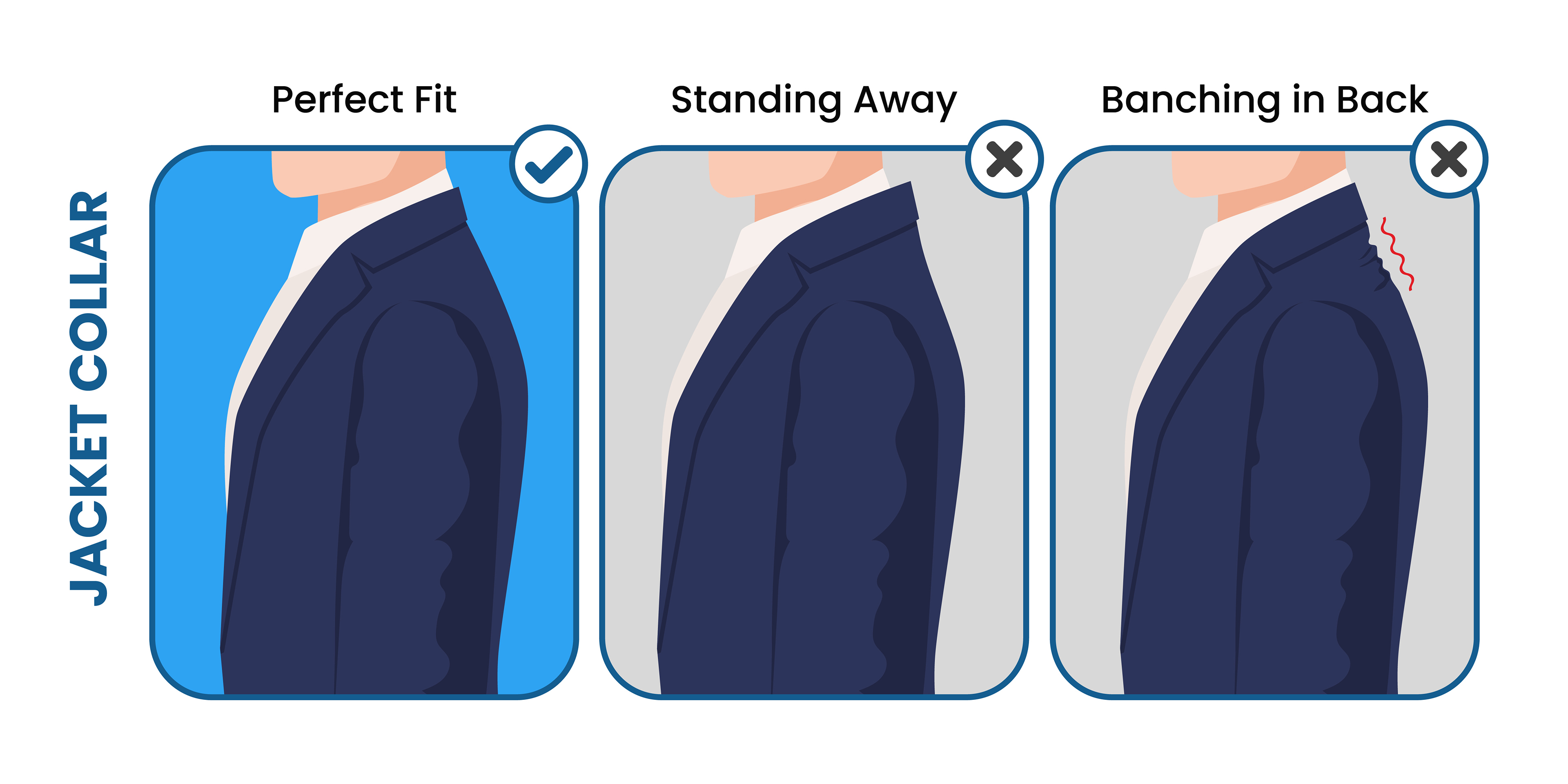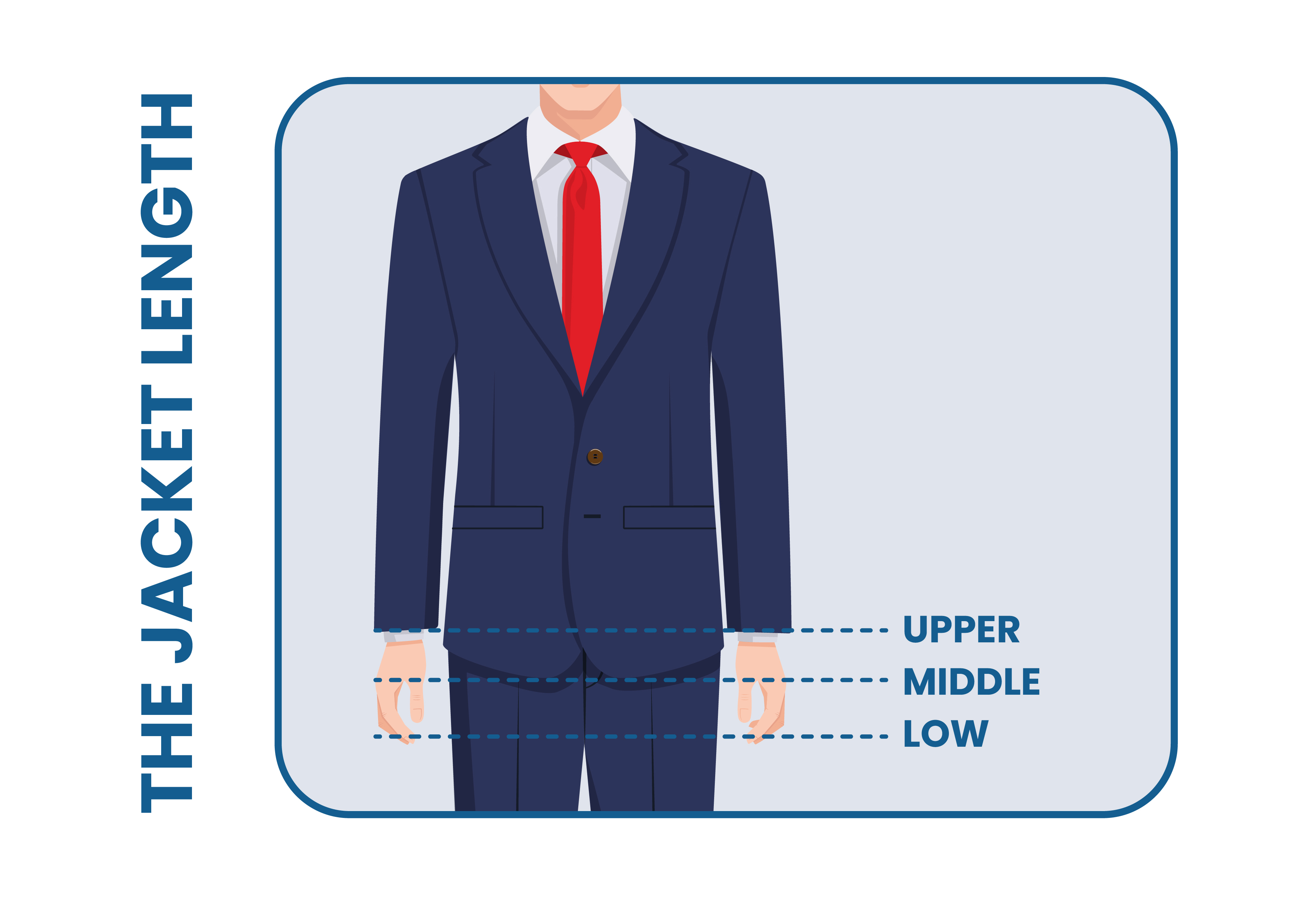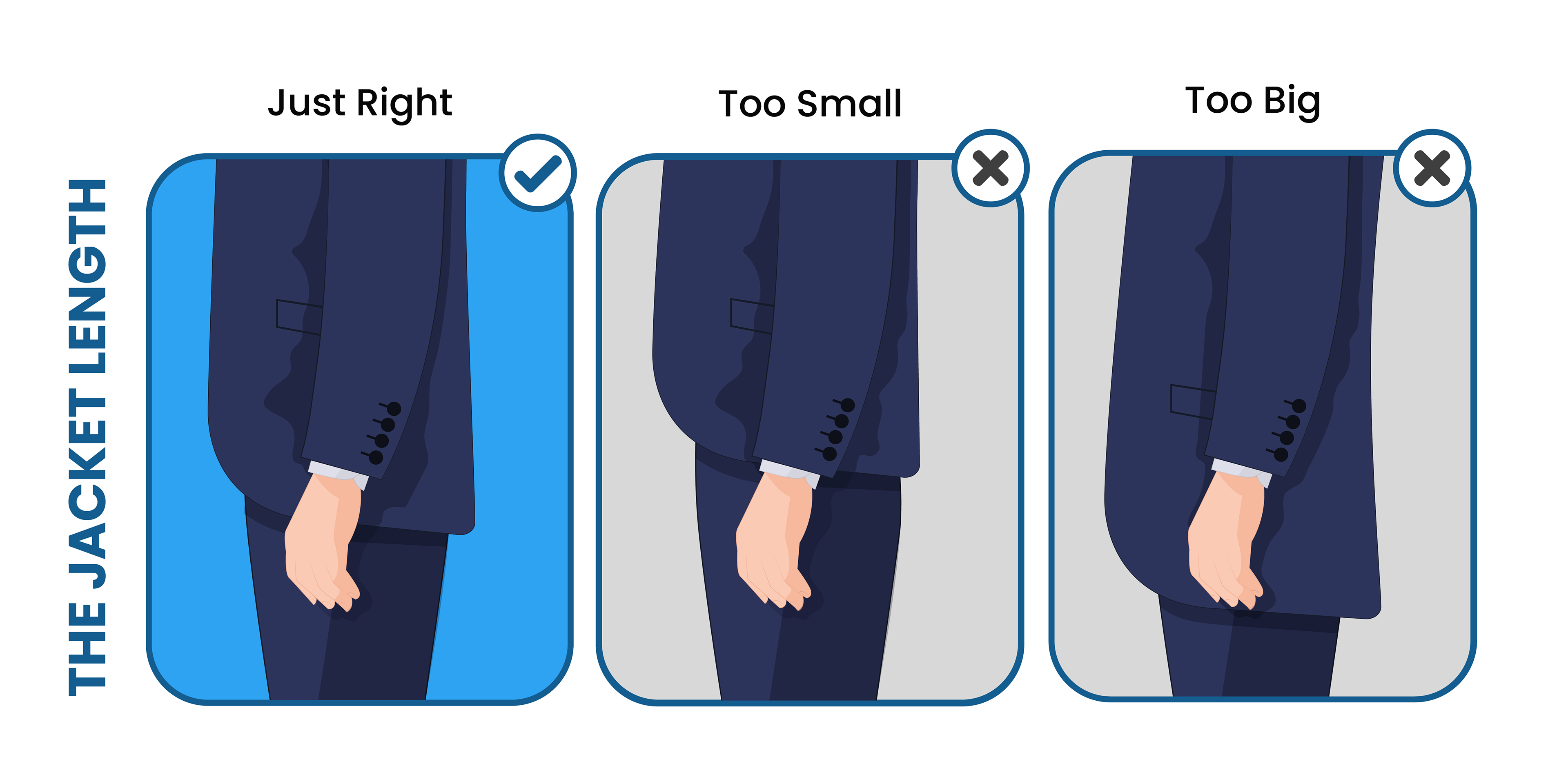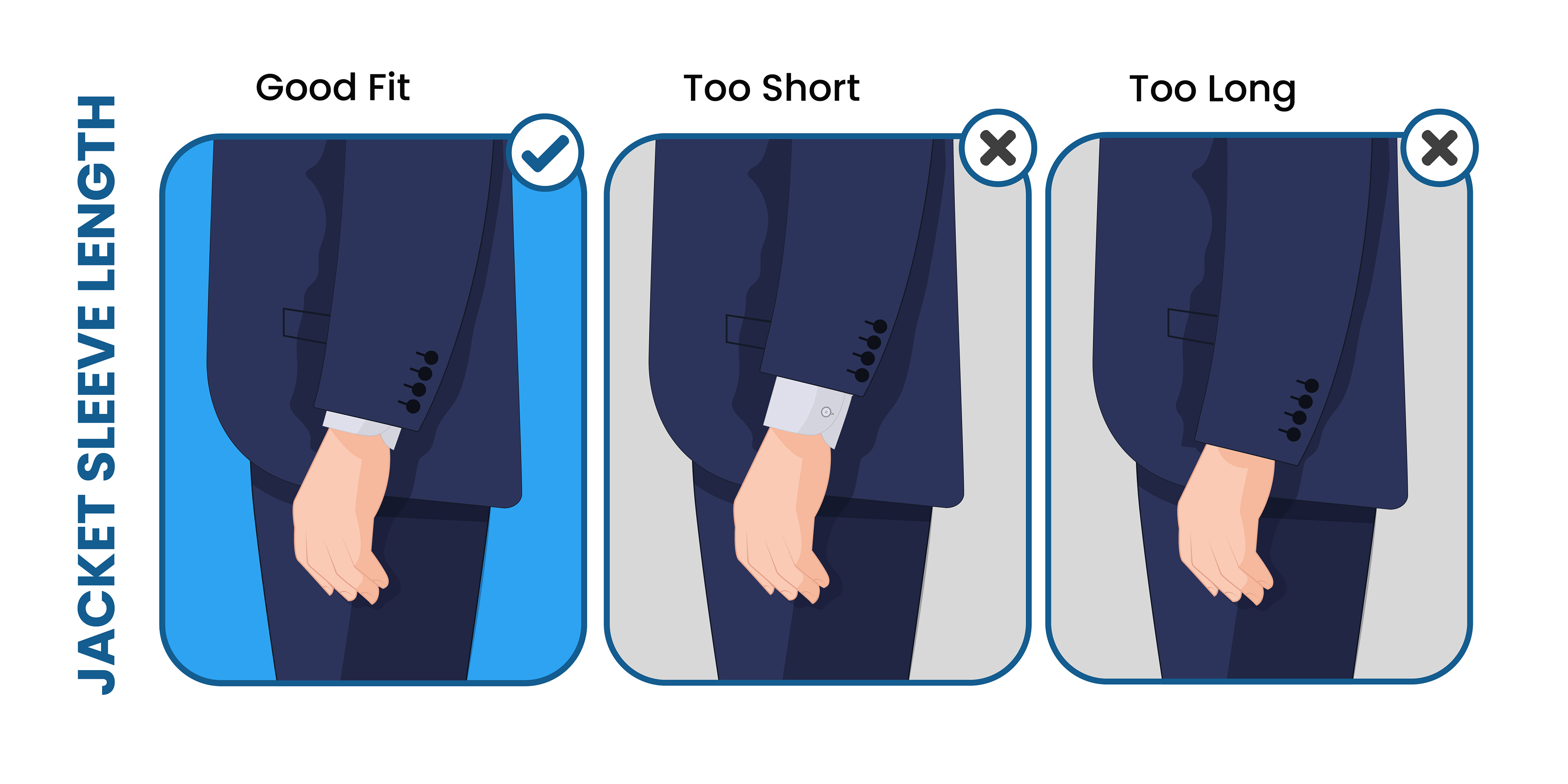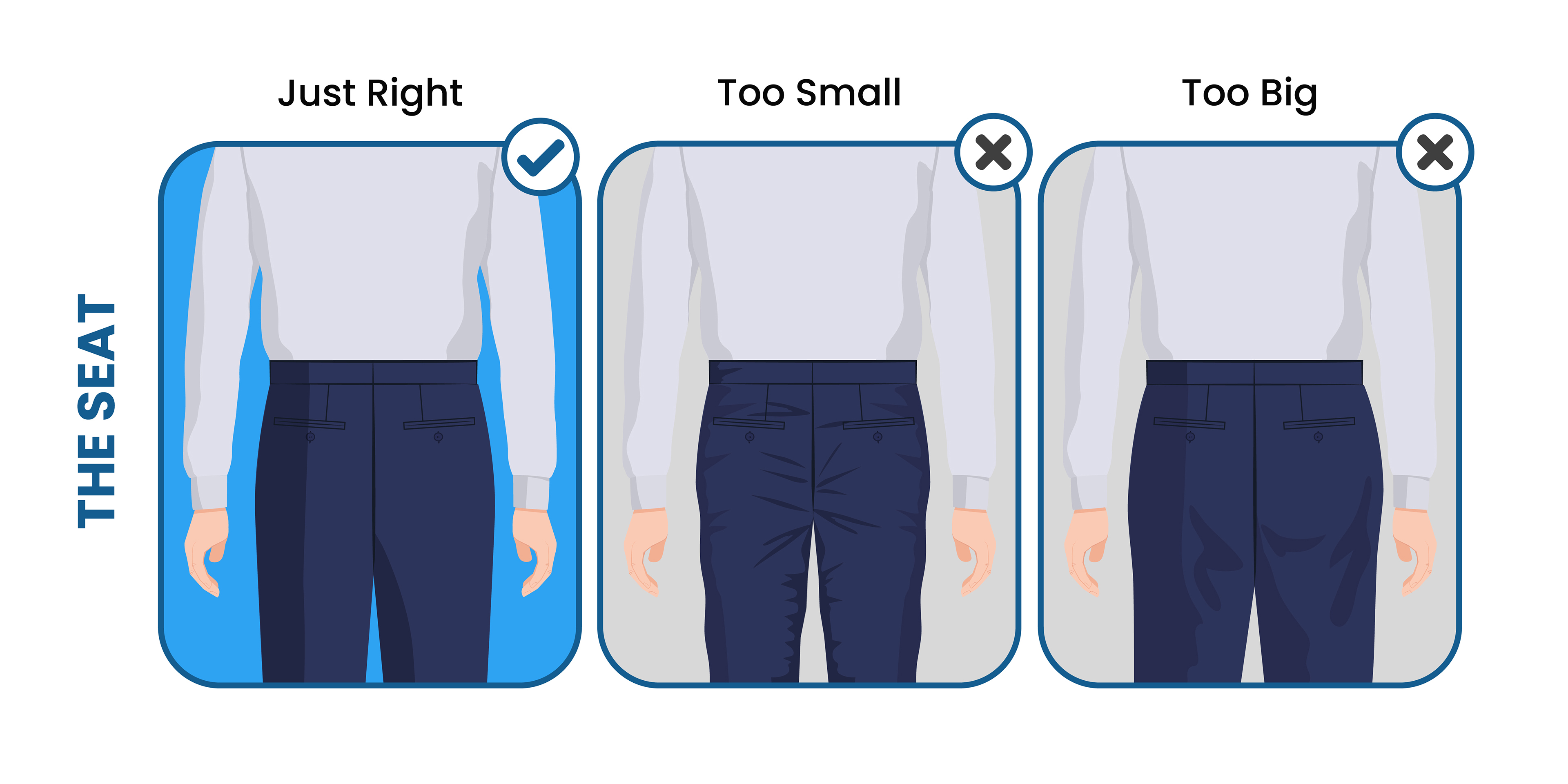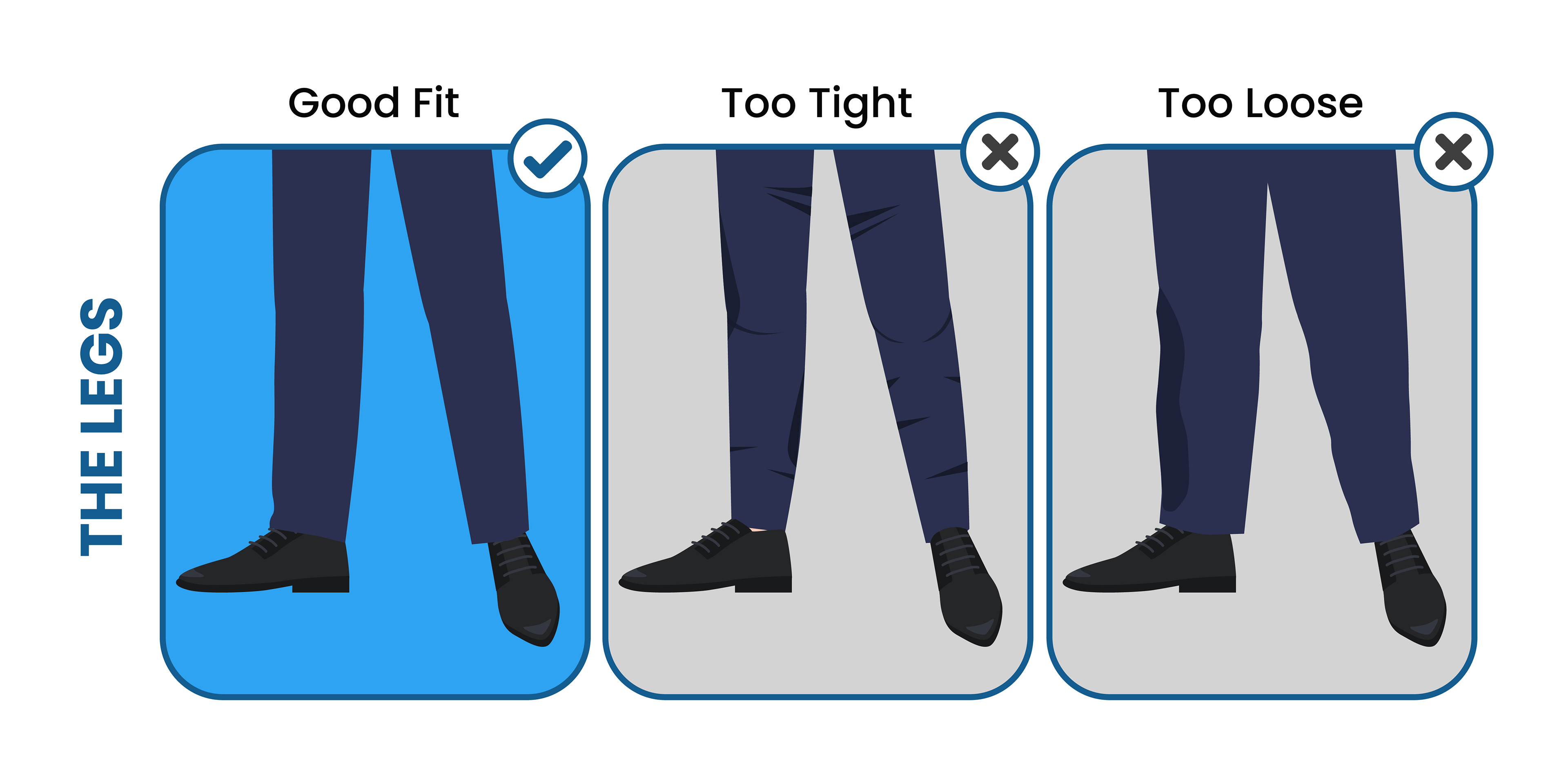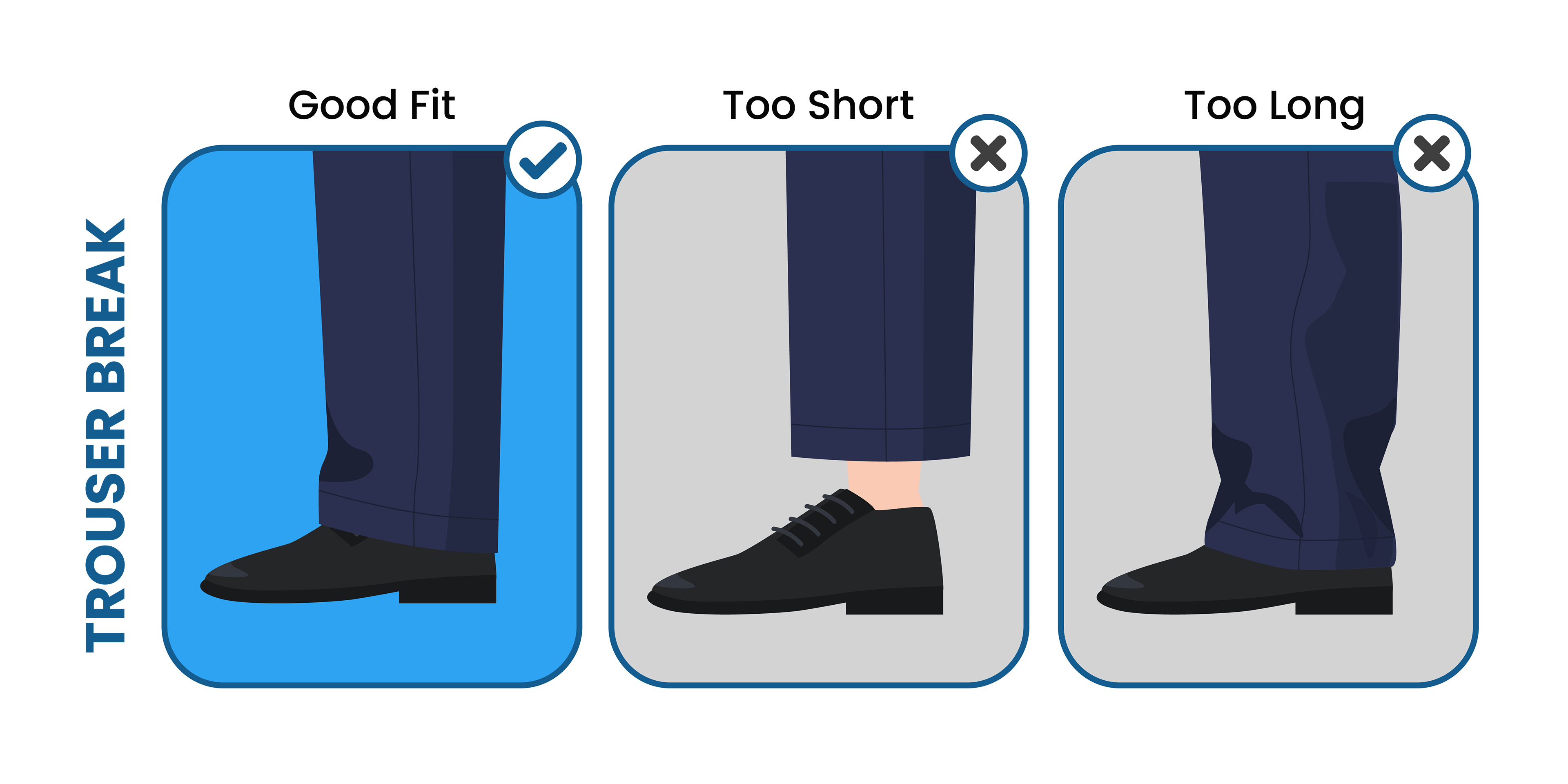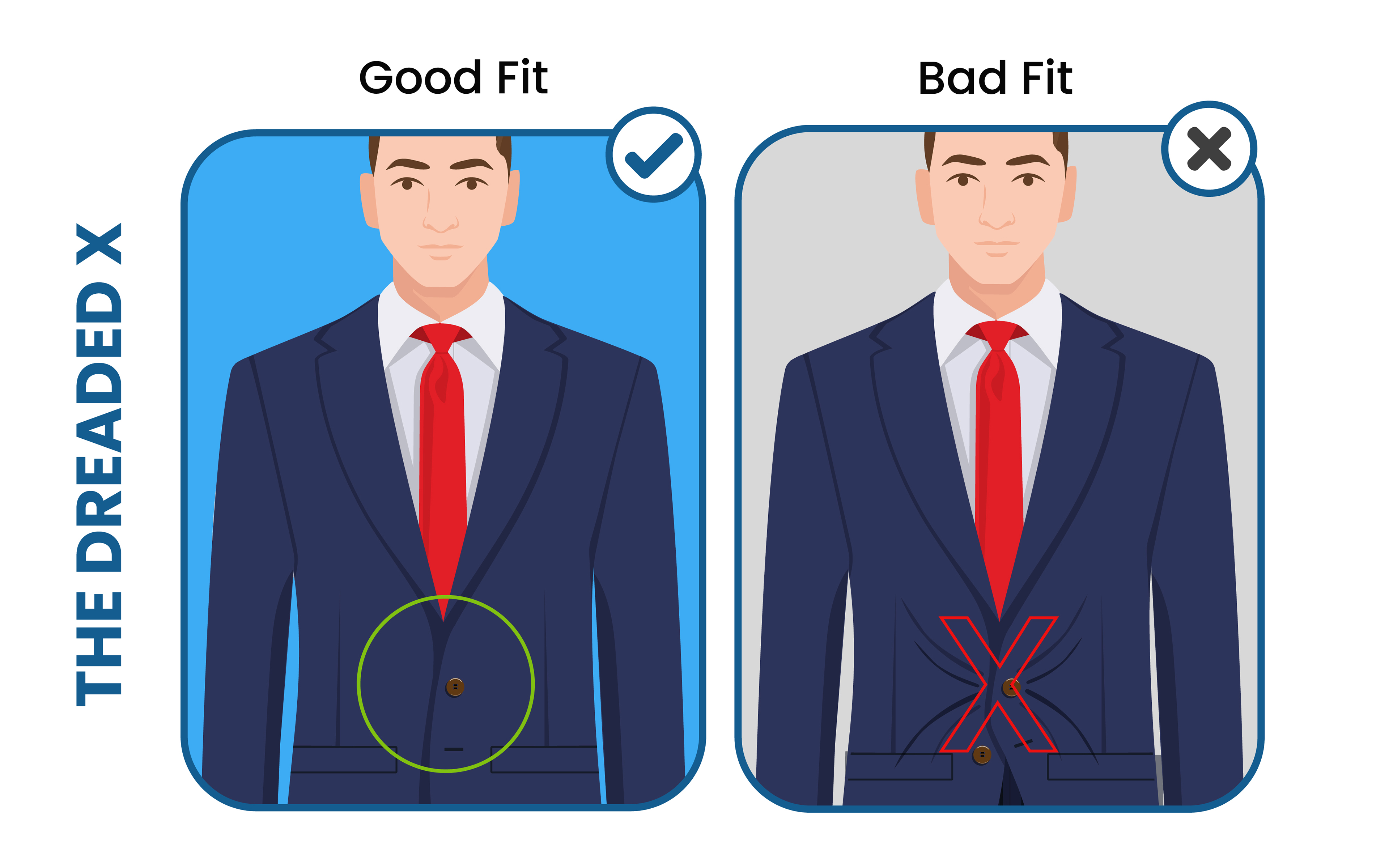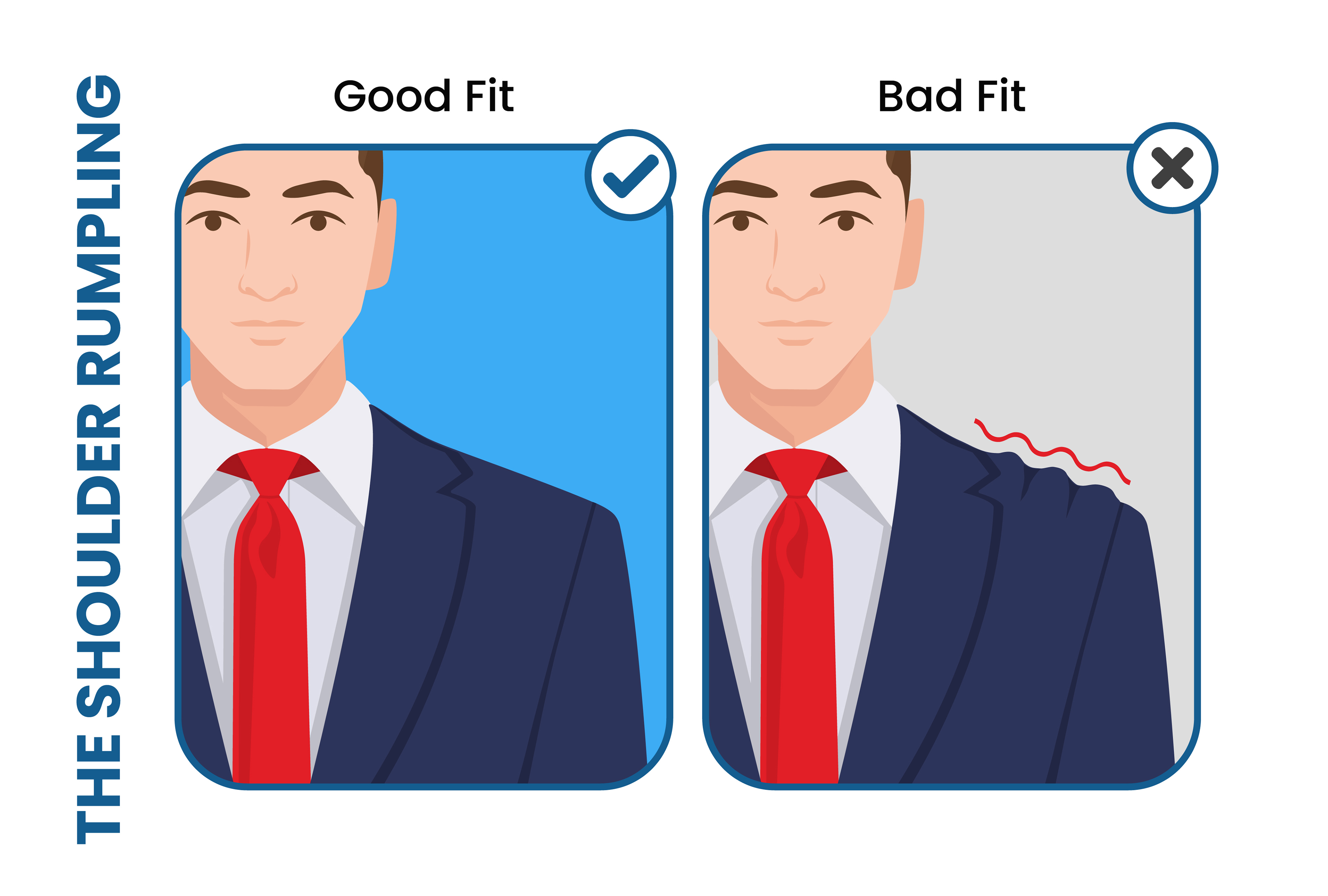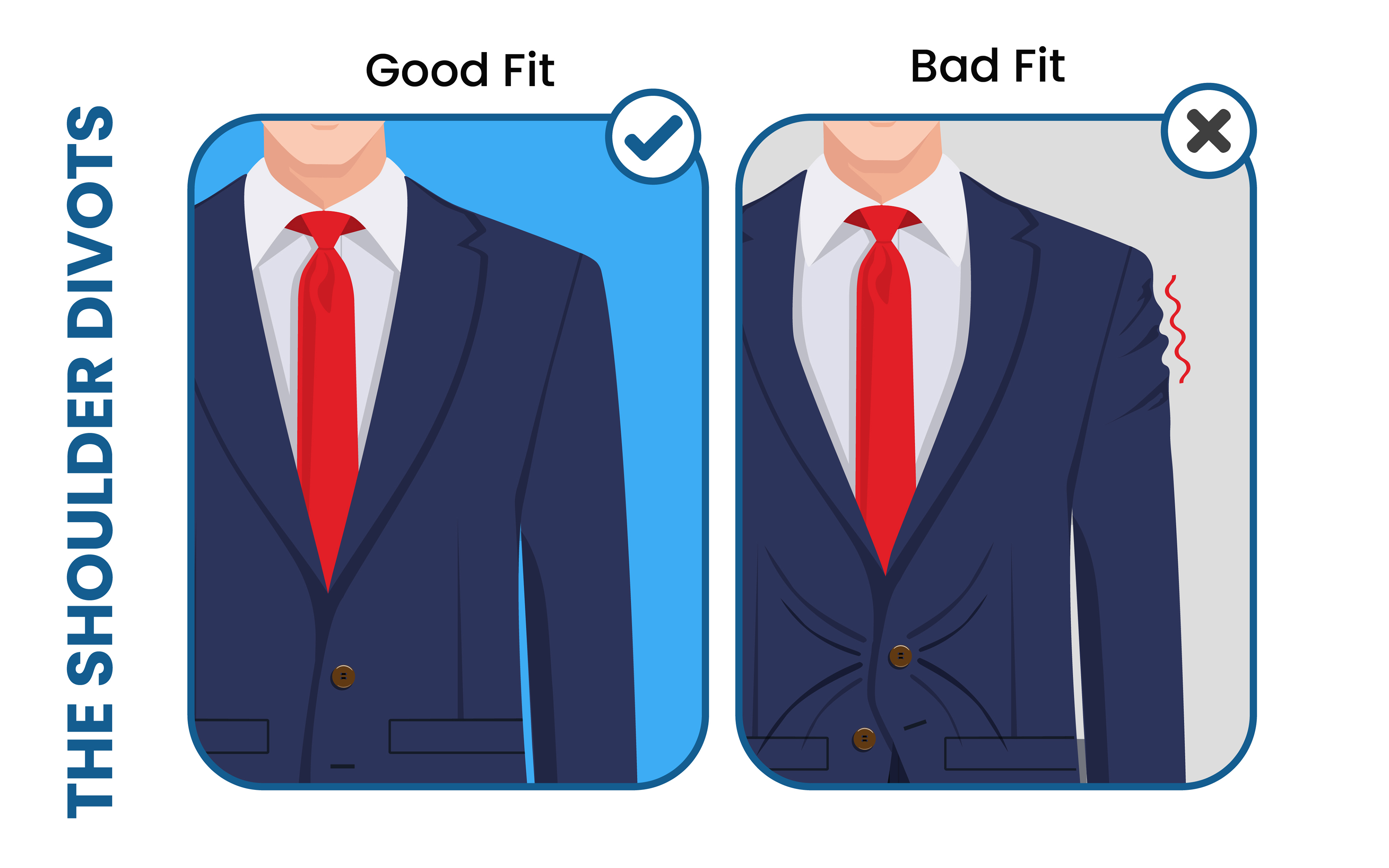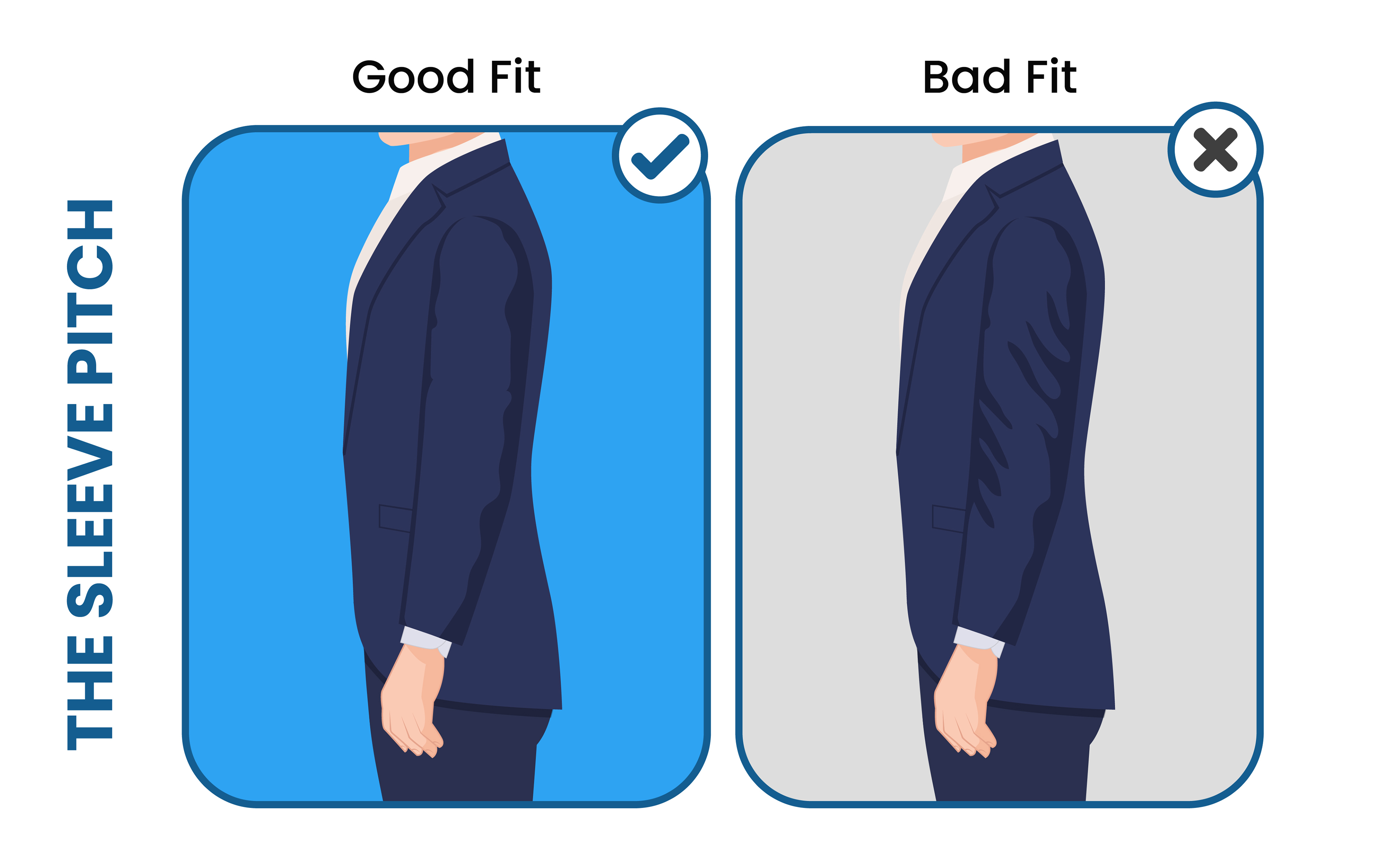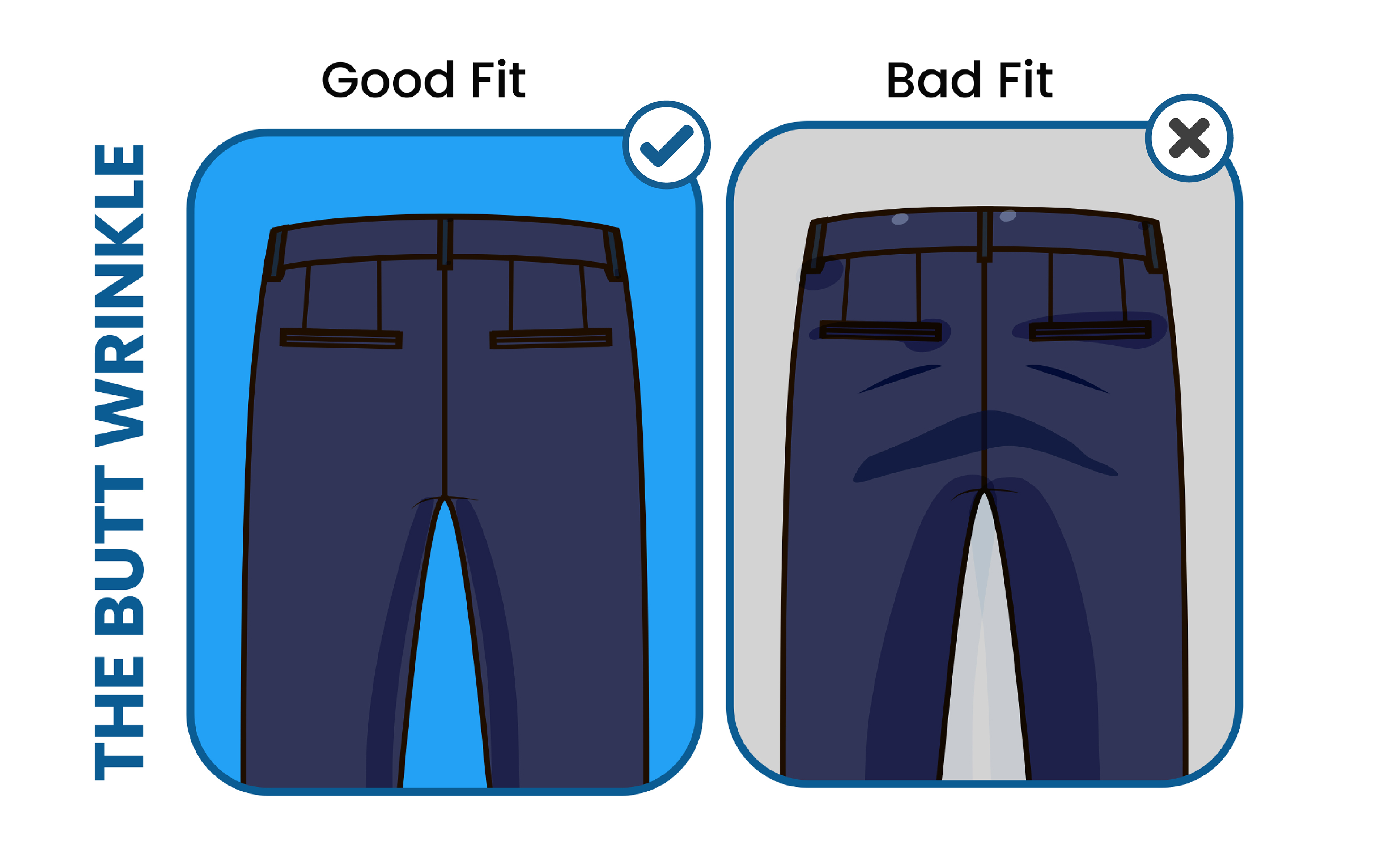The suit fit makes or breaks the suit.
Imagine that you have finally found the ideal ensemble for your needs.
The big day comes for you to wear your suit for the first time. But when you put it on, you realize something isn’t quite right. The shoulders are all bunched up, and the trousers are sagging.
Any creasing you see in your suit ruins your perfect image. That’s not how a suit should fit. So let’s prevent that from happening!
Suit Fit: The Basics
The perfect suit must create a sleek body silhouette. But how to tell if your suit fits?
When buying a new suit, the importance of fit outweighs the style and fabric choice. However, it can be tricky to get the perfect fitting suit; there are many moving parts to consider.
Every suit wearer needs to know the suit basics to ensure he gets the perfect fit. Here are some of them:
Never fasten the last button of your suit. If you’re wearing a two-button single-breasted suit, only fasten the top button. Unfasten the jacket closure button when you sit down.
Your suit jacket fit should create an hourglass shape when buttoned, with no pulling on the fabric. Additionally, the belly button of the suit that fits perfectly should be able to fasten flawlessly.
Make sure the fabric across the seat of the suit trousers lays smoothly. If there is any pulling or sagging, toss those trousers aside.
If you opt for a suit vest, be sure that it covers the waistband of your trousers. It should not hang loose, but neither should it ever show your stomach.
And finally, when picking out your dress shirt, watch out for ballooning above your waistband. Also, shirt cuffs should not cover your hands.
How Should a Men’s Suit Fit – Quick Video
Now that we’ve covered the basics, it’s time to dwell on the specifics that define the suit’s fitting.
Are you in a hurry? Watch the video to quickly learn how to fit your suit properly:
In case you’re not a fan of videos, I’ve published the full transcript (and more) of what you might hear there. So please continue reading the article.
How Should a Suit Fit: The Jacket
A suit jacket may not be the first thing you notice about a suit. Though, you can bet that if the jacket fits poorly, you won’t notice anything else.
Here are some guidelines to help you understand how a suit jacket should fit.
The Jacket Closure
Fastening your button should not pull on your jacket or cause lines to poke out from the button.
A suit that fits perfectly will reflect an exact button closure, and the two sides of the jacket will meet flawlessly. You should feel like the jacket is gently hugging you.
If you find that your jacket pulls apart at the bottom, causing a wide gap, your jacket is too tight. If the pull is strong enough, you risk the button popping right off.
To ensure that your suit is not too large, watch if the jacket sags forward. It should not hang away from your body. If your jacket hangs even a little loose on your body, you risk looking overwhelmed by your suit.
The jacket closure is crucial to the suit fit. That’s because, when wearing a suit jacket, you should button up when you are standing up.
Remember the basics: do not button up all the way. Only the top button should be fastened if you’re wearing a two-button suit. Fasten the middle button if it’s a three-button jacket.
The top button is optional for a three-button jacket.
The Jacket Shoulders
The jacket sleeve begins right where your natural shoulder ends; that is where the seam for the jacket shoulder should fall.
The perfect shoulder fit will ensure your suit jacket lies flat on the shoulders.
If the seam hangs over the shoulder’s natural slope, the shoulders create inside jacket gaps, which means the jacket is too large and loose. Make sure you avoid this look at all costs.
If you find that the jacket’s shoulder is bunched up close to your neck, the jacket is too small. It causes the sleeve seam to creep up past your shoulder line and create a tight feeling in your shoulders.
Another sure sign it is too small is if you cannot comfortably relax your shoulders.
Both of these poorly fitting jackets will create unsightly lumps in your silhouette and lead to a bad fit.
The Collar
A well-fitting jacket collar will sit evenly against your shirt collar on the back of your neck. It should be gently resting there, with no gaps or no pressing tightly against your shirt collar.
If there is a gap between the collar and your neck, that indicates that the jacket is too large. Also, you will see that it often looks as though you could stick a coat hook right in the jacket.
A too-tight jacket collar will often fold upon itself like an accordion. Not only does it look bad, but it also feels terrible. You will know right away that the suit jacket is too small and want to take it off.
The Jacket Length
The suit jacket length creates a balance between the lower and upper body. It’s one of the essential traits of how a suit should fit, yet it’s often forgotten.
A helpful way to measure precisely where the jacket should fall is by your height. A good jacket length will fall around the middle-crotch level.
If that is unhelpful in determining how long your jacket should be, you can guide by your hands. Stand straight in front of a full-length mirror. Keep your hands down at your sides.
The perfect jacket length will meet your arm fingers when the arm is straightened up and should cover your rear end. It should end in the middle of your hands, somewhere around the tip of your thumb.
If the length extends beyond the fingers of your arm, then your jacket is too big. Conversely, you will know if the jacket is too short when it barely touches your wrist.
Suits often have three length variations. When buying a new suit, you will often see a letter next to the size number. It represents the length of the suit.
If you are over 6’2″ tall, the jacket can fall slightly longer than the recommended mid-crotch level. I often advise tall people to go for a suit labeled “long”.
People between 5’9″ and 6’1″ can choose the “regular” suit version. If you are under 5’8″, pick a jacket that is labeled “short”.
The Sleeve Length
The length of your jacket sleeve is critical. In principle, you should be able to see the cuff of your dress shirt.
The perfect sleeve length will ensure ¼ to ½ an inch of the dress shirt cuff is exposed beyond the jacket if the shirt sleeve is accurate.
If the whole cuff of a perfectly fitting dress shirt is exposed, the jacket is too short. On the other hand, if the shirt cuff is not visible at all, the sleeve length is too long.
Another helpful way to measure your sleeve length is to stand with your arms at your sides.
Flex your wrists so that your palms are facing down to the floor. Make sure the cuff ends at ¼ inch above the back of your hand.
If it goes lower or covers your shirt cuff entirely, you need to get your tailor to fix your jacket sleeves. It can be done easily without ruining the integrity of the suit.
How Should a Suit Fit: The Pants
Ill-fitting dress pants are an eyesore. They look goofy if they are too large and sometimes offensive if they are too small.
Even worse is how they feel. Nobody feels comfortable in a pair of dress pants that don’t sit correctly on them.
Here are a few tips on what to look for and how to fit your suit pants.
The Seat
First of all, fabric squeezing your seat is highly uncomfortable. You should not feel any restriction in the seat of your pants or your crotch.
The perfect-fitting suit pants will ensure that the fabric on the backside of your suit pants smoothly covers your behind. The material should look as if it was gently draped across your bottom.
The material will wrinkle up when a pair of pants are too small. Onlookers should not detect any pulled, wrinkled, squeezed, or sagged fabric.
On the flip side, if there is too much fabric, the dress pants’ bottom will hang down. That will create a baggy look, and a gap between the leg, thigh, and trousers will appear.
The Legs
The legs on a well-fitting pair of suit pants should hug your upper thigh without squeezing. Additionally, they should gently taper toward your ankle, creating a slimming line as they move down toward your shoe.
Like the old Kellogg’s cereal commercial used to say, you should be able to “pinch an inch” on either side of your thigh.
If there is more than an inch when you pull the fabric, there is too much material. It indicates that the pants are too loose.
On the other hand, your pants are too tight if you cannot even pull together an inch of fabric. They would probably feel uncomfortable, and they would definitely look odd and inappropriate.
Make sure your pants don’t feel restrictive. If you can squat while wearing them and easily bend your knees, they probably are loose enough.
The Trouser Break
The trouser break is the crease at the ankle, where the fabric meets the top of the shoe.
The perfect hem should be long enough for the shoe to interfere with the cuff, causing a subtle wrinkle or a slight break. Make sure the cuff rests on the top of the shoe, but only barely.
The pants are too large if they create multiple wrinkles. Longer pants can be easily adjusted, though. In fact, most suit pants come unhemmed and should be an easy fix by a tailor.
If there is no break and the pants show the sock too much when you sit down or walk, it means they are too short. Avoid this error by buying longer pants or letting out a little bit of fabric from the hemline.
Bad Suit Fit Signs & Things You Should Avoid
Some suits may not fit in small ways that are easy to fix. For example, if the pants or the jacket sleeves are too long, a tailor can easily adjust the hem.
Yet there are some suit errors that all the tailoring in the world just can’t save. These suits are better to avoid altogether.
The X-Wrinkle
Here is a simple way to immediately tell if the fit is bad and the jacket is too small for you:
Button up the suit jacket while standing straight. Look for wrinkles that extend from the button and form an X shape across your body. If you spot an X, you need to pick a new, larger jacket.
It cannot be saved with tailoring. It isn’t just that the torso is too small. The X-wrinkle pulls on the shoulders and the back, and it may pull the belly button right off!
Shoulder Wrinkles
Sometimes you will see that the jacket’s shoulders will become bunched up. It makes for a very wrinkly silhouette.
If you don’t have a smooth outline, your suit does not fill well, and you might end up looking sloppy.
This effect happens when the suit jacket is too large for your frame. It may also be a shoulder problem. If your shoulders are not broad enough to fill out the body, you will need to seek a smaller one.
Arm Wrinkles & Shoulder Divots
Overlarge shoulder pads can cause the fabric to tuck in around the upper arms and create shoulder divots.
The too-big shoulder pads cause shoulder seams to extend beyond the upper arm, pulling up the sleeve fabric.
This effect can also happen if you do not have good posture. For instance, if you slouch and your jacket is not fitted well, you will end up with wrinkly arms.
In both of the above instances, the only solution is to buy a larger suit jacket and alter it at a tailor.
Butt Wrinkle
If you are finding wrinkles in the fabric across your seat, your suit pants are too tight. As a result, your bottom pulls the fabric up toward your waist, causing unsightly lines.
More concerning than how your suit looks – is how it feels. Pants that are too small look bad, but they also feel uncomfortable.
The fabric pulls up toward your waist, bringing all the material up. And most of it will settle as far up against your crotch as possible.
Nobody likes the feeling of their pants trying to gather as far up on their body as possible. So just get slightly larger pants and save yourself the discomfort.
Final Words
Finding the ideal type of suit for your body shape and what color suits you best is important.
Decide on the lapel, as it defines the formality of your suit. Then, explore the shoe options to wear with it, too.
But the suit fit is paramount. And when it comes to suits, rules should be bent but not broken. So when you’re finally ready and confident that you’re buying one, try to check as many of the suit-fitting points from above.
Keep in mind that a tailor can make small alterations, especially around the pants.
However, tailors are no magicians. You want as few changes as possible to preserve the suit’s integrity.
Hi, I’m Alex, and I’ve studied and specialized in styling in Rome. Through my writing, I want to help men dress well and learn the purpose and significance of suits and other formal attire. My final goal is to make men more confident in their wardrobe choice and life in general.
